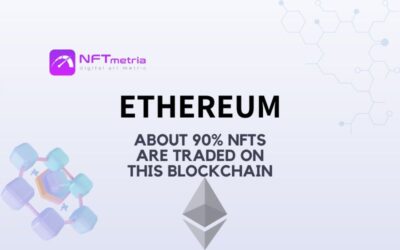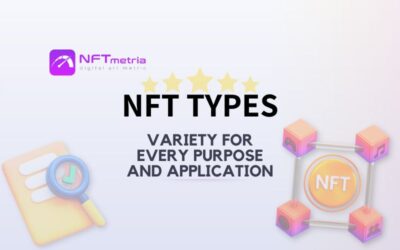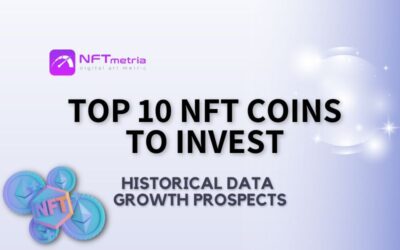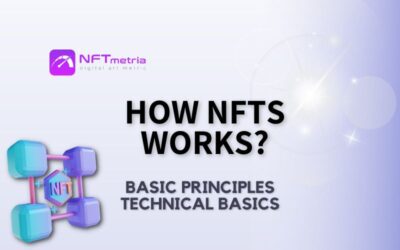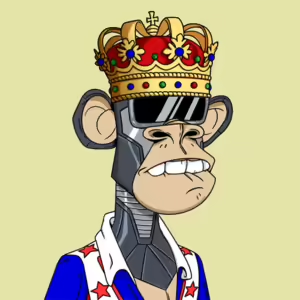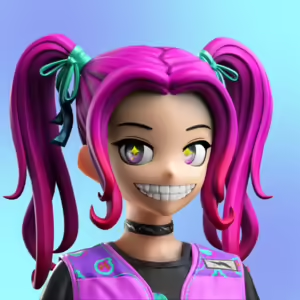Ethereum is an incredibly popular blockchain and is a great starting point for anyone interested in NFTs. Currently, this blockchain ranks second (after Bitcoin) in terms of market capitalization among all cryptocurrencies in the world (over $712 billion). At various intervals, Ethereum dominance is within 20 percent.
Since its launch in 2015, the blockchain has continued to grow in popularity and it remains at the forefront of NFT trading. It accounts for more than 50% of total transaction data in 2023 YTD, with monthly transaction volume ranging from 1 million to 2 million.
What is the Ethereum NFT blockchain?
Ethereum is an open source blockchain that allows developers to create and deploy decentralized applications. It was designed to run smart contracts, which are self-executing contracts that facilitate the exchange of assets without intermediaries. Ethereum was developed by Vitalik Buterin in late 2013 and launched on July 30, 2015.
The blockchain has its own token called Ether (ETH), which serves as a means of payment for transaction fees and services on the network. At the same time, this cryptocurrency is one of the most traded in the world, and its rate at the time of this writing is about $1,800.
Blockchain has gained popularity due to its ability to create new decentralized applications using smart contracts that can help industries such as finance, management, etc. In addition, the decentralized nature of Ethereum and its smart contract capabilities make it more secure and transparent compared to traditional systems.
Smart contract protocols may seem complicated, but they are the main building blocks of NFTs. They bridge the gap between digital assets and the blockchain network by allowing the transfer of ownership and guaranteeing authenticity. NFTs are essentially smart contracts linked to digital or physical assets. The advanced functionality of the blockchain and its early market position have made it a popular choice for large NFT projects. Even Ethereum-compatible digital wallets and transaction technologies have also been created primarily for the blockchain.
How does the Ethereum NFT blockchain work?
Ethereum is based on the same technology as Bitcoin – a blockchain, which is a decentralized, distributed database that records transactions made on it. Unlike Bitcoin, Ethereum was designed to support smart contracts that can be executed an unlimited number of times.
This blockchain works on the Solidity programming language, with the help of which smart contracts are created.
Ethereum itself works using the EVM:
- The entire network is consistent with the state of the EVM.
- Each host on the network keeps a copy of the state of the EVM.
- Any participant can broadcast a request to this computer to perform arbitrary calculations. Each time such a request is broadcast, other network participants check, confirm, and perform a calculation.
- When a developer creates a new dApp, he writes code that runs on the EVM (it’s a sandbox where code runs in a safe and sandboxed fashion).
Ethereum also differs from Bitcoin and many other tokens/coins in that it does not have a maximum supply of its token. Instead, it fights inflation with transaction fees. This unique approach, combined with powerful technological tools, has made Ethereum a popular blockchain platform that is user-friendly. People are using the web to create NFTs, dApps, DeFI and more. This blockchain offers a great application of the technology with built-in scalability, making it an ideal choice for NFT enthusiasts as interest in NFT and Web3 continues to grow.
Smart contract standards for the Ethereum NFT blockchain
The most commonly used NFTs smart contract standard for Ethereum is ERC-721. This standard contains a set of rules and guidelines for the creation and management of non-fungible tokens on the blockchain. It allows you to create unique tokens that can be owned and transferred securely, while guaranteeing the safety of the token metadata.
Another popular standard is ERC-1155, which is a more advanced version of ERC-721.
In addition to these, there are several more NFT smart contract standards, such as ERC-998, ERC-998 Top-Down Composable Non-Fungible Token Standard, ERC-809 and others. These standards meet the specific needs of different use cases and industries, providing greater flexibility, security, and interoperability in the NFT ecosystem.
What consensus mechanism does the Ethereum blockchain use?
The blockchain used a consensus mechanism called Proof of Work (PoW) to confirm transactions and create new blocks. With the release of Ethereum 2.0, the network moved from PoW to Proof of Stake (PoS). PoS aims to improve the scalability and energy efficiency of the network by requiring verifiers to pledge a certain amount of ETH and allowing them to validate transactions based on their collateral rather than processing power.
What are the main applications of the Ethereum blockchain?
The scopes of Ethereum are as follows:
- Games;
- DeFi;
- Collectibles;
- Gambling;
- NFTs;
- Social;
- Web 3.0.
The list doesn’t end there. The above are only the most popular applications of this blockchain.
The Ethereum Blockchain Ecosystem
The Ethereum ecosystem consists of more than 4000 dApps of different categories:
- Games,
- DeFi,
- Social,
- Casino,
- Marketplaces and others.
Popular dApps on the Ethereum blockchain
The most popular dApps on Ethereum are:
- Uniswap,
- 1inch Network,
- Uniswap NFT Aggregator,
- Curve,
- Dodo.
What are Ethereum NFTs?
Ethereum NFTs are NFTs created on the Ethereum network. Today, about 90% tokens (all NFT types) are issued on this blockchain, thus forming the largest market. Due to this, there are also disadvantages – network congestion and high gas fees, but despite this, it remains the undisputed leader in this sector.
Top Ethereum NFT Collections
In fact, all the top NFT collections on the market are created in this network. But in order to demonstrate the most striking examples, we highlight three of them:
- Bored Ape Yacht Club,
- CryproPunks,
- Otherdeed for Otherside.
Bored Ape Yacht Club
Bored Ape Yacht Club is a collection of 10,000 NFTs (PFP type) that have the ERC-721 standard.
- Created in April 2021.
- Currently the benchmark for the NFT market on Ethereum.
- Has one of the largest trading volumes – more than 1 million ETH.
- Floor price is also impressive – over 47 ETH.
CryproPunks
CryproPunks is one of the first NFT collections on the network.
- Created in 2017,
- Has one of the largest trading volumes – over 1.1 million ETH.
- Due to an error in the original smart contract, in January 2022, the full transition of the collection to the new smart contract was completed.
- CryproPunks are also the benchmark for the market, and what’s more, they are the ones who launched the wave of PFP NFTs.
Otherdeed for Otherside
Otherdeed for Otherside is a collection of lands for the Otherside metaverse on the Ethereum network, consisting of 61.3k NFTs (Virtual worlds NFTs). This collection is iconic in the market as one of the largest and most promising metaverses. It also has the largest trading volume on the secondary market among similar projects – more than 605k ETH, and the floor price is more than 1.1 ETH.
What popular NFT artists create art on Ethereum blockchain?
Digital artists almost in absolute majority for their digital creativity choose this blockchain. Some of the most popular artists on the Ethereum network are Beeple, Trevor Jones, Murat Pak, XCOPY, FEWOCiOUS, Matt DesLauriers, Tyler Hobbs, Hackatao and others.
Which wallets are suitable for holding Ethereum NFTs?
Almost all wallets that support EVM networks are suitable for storing Ethereum NFTs. Let’s say even more – almost all currently known wallets were originally created for Ethereum. The most popular wallets are Metamask, Trust Wallet, Zerion Wallet and Ledger.
How to buy Ethereum NFTs?
You can buy Ethereum NFT on marketplaces, as well as on centralized exchanges with their subsequent withdrawal to the wallet. For this you need:
- Register and pass identity verification.
- Install a wallet that supports Ethereum NFT for example Metamask. It has the ability to buy Ethereum directly from the wallet using a bank card (it is worth considering that not all regions are supported by providers, as well as different commissions depending on the region).
- With the help of P2P trading, buy Ether and purchase NFT in a special section of the centralized exchange.
Where to buy Ethereum NFTs?
You can buy Ethereum NFTs on marketplaces. The most popular among them:
You can also purchase NFTs on many centralized exchanges, such as Binance, Bybit, OKX, Huobi, and Kucoin.

